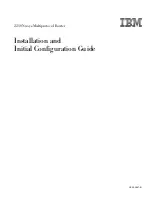
44
The following notations will be used:
1.
lan means the LAN port;
2.
<> specifies the arguments of the command, <1-4> means a number between 1 to 4;
3.
[ ] indicates a required or optional parameter, or choice of parameters;
•
Interface Name or ifName represents a profile interface, which can be the LAN port (lan), a
PPP profile, a PPPoE profile, an ISDN connection profile, or a modem profile.
4.
Profile Name means a WAN profile, such as a PPP profile, LAN-to-LAN profile, Internet
profile, or Single User Dial-in profile, not the LAN port.
5.
xxx/yyy means xxx, or yyy;
6.
num means any integer number (such as 19200, 9600, ...);
7.
MacAddr, or nn-nn-nn-nn-nn-nn means any MAC address in hexadecimal format, where
each nn can be 00, 01, ... 09, 0A, 0B, 0C, 0D, 0E, 0F, 10, 11,… FF;
8.
ipAddr, netMask, or xxx.xxx.xxx.xxx means any ip address or network mask, where xxx is
a decimal integer between 0 and 255
9.
the term
string
means a string of characters up to the specified length, which may be
enclosed in double quotes (“) (required if the string contains embedded blanks
Command Categories
From a functional point of view, commands can be grouped into the following functional categories:
(1) Bridging
(2) Compression
(3) Diagnostics
(4)
Filtering
(5)
IP
(6)
Port
(7) Profile
(8) Security
(9) SNMP
(10) Statistics
(11) System
This list may vary depending upon the router model and the installed features.
For convenience, the section
Command List
summarizes all commands using the following categories:
Bridging
Compression
Diagnostics
DHCP
Dial-In Users
IP
Port Commands
Profile Commands
Security Command
SNMP
Statistics
System
This summary is followed by examples in subsequent sections. Examples will be given in the following format:
Command Syntax
Description
: the description of the command is given here.
















































